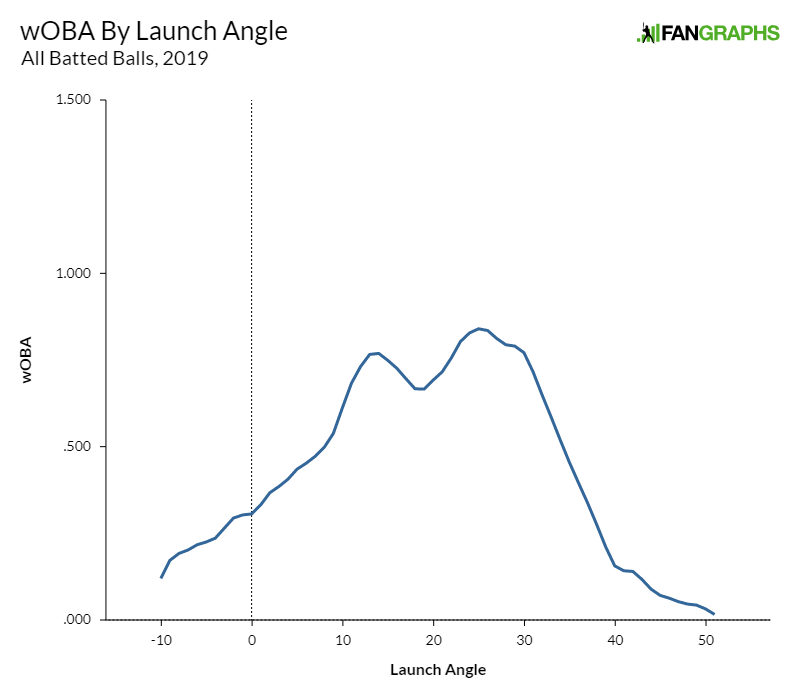A Sweet Spot by Any Other Definition
I’d like to show you a graph. It’s not a surprising graph, nor a shocking one. Here’s the production on batted balls across all hitters in 2019, grouped by launch angle:

It’s not exactly rocket science. Hitting the ball straight down is death, hitting the ball straight up is just as bad, and most of the juice comes in line drives and fly balls that don’t approach popup status. There’s even a cute little dimple right around 15 degrees, where the ball has too much loft to be a flare but not enough that you’re all that likely to hit a home run. That all seems to make sense.
Next, let’s complicate it slightly. Here’s the same graph, only with batted balls hit less than 95 mph excluded: Read the rest of this entry »

 Jay Jaffe
Jay Jaffe